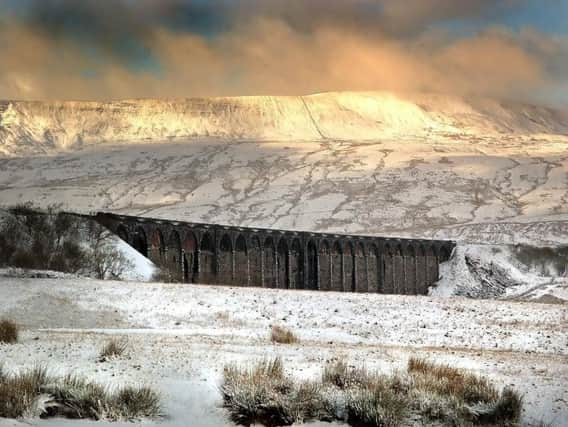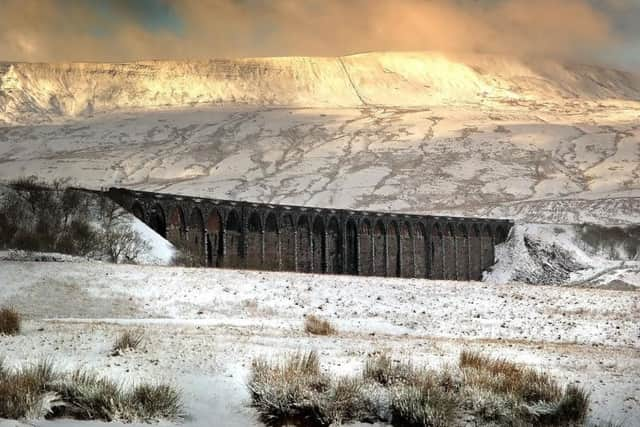Risk of thundersnow as extreme weather ice warnings issued across Yorkshire


The unusual meteorological phenomenon could break out in the north as the UK battles wintry showers, freezing air and blizzards, according to forecasters.
The phenomenon occurs when thunderstorms form in wintry conditions, causing snow to fall instead of heavy rain during the thunder.
Advertisement
Hide AdAdvertisement
Hide AdMultiple yellow weather warnings have been issued for ice across the country including in Leeds and Yorkshire, as the current cold snap continues to freeze the county.


?Forecasters are predicting showers bringing rain, hail sleet or snow showers on Tuesday evening, followed by a widespread frost with icy patches across much of the country that will continue into Wednesday. There is also a chance this weather could develop into thundersnow, which, when combined with icy conditions, is set to cause dangerous driving conditions.
The Met Office forecast for Yorkshire
"Ice will form in places later on Tuesday afternoon and overnight into Wednesday morning especially where wintry showers leave surfaces wet.
Advertisement
Hide AdAdvertisement
Hide Ad"Further hail, sleet and snow showers are also likely at times. Accumulations of several centimetres are likely above 200 metres, mainly across western Scotland, Northern Ireland, Wales and northwest England. A small amount of settling snow (1 cm or less) is also possible at lower levels in a few places.
What breakdown providers are saying about the threat of thundersnow
Simon Henrick, Head of News at Green Flag, commented: “Ice on roads and surfaces makes for a risky commute, so we urge drivers to do all they can to stay safe when taking to the roads.
“What’s more, the risk of snow showers or thundersnow means drivers may be caught by surprise if they find themselves in adverse conditions, so it’s worth keeping an eye on weather forecasts for your region and only drive if absolutely necessary.”
Advertisement
Hide AdAdvertisement
Hide AdKey driving tips to keep safe in cold weather
Walk around the car and look for any signs of potential trouble, especially tyres and lights.
Check tyre pressures, spare included.
Check all fluid levels and top up if necessary.
Make sure you have breakdown cover.
Keep a road map in the car so you’ll be able to explain where you are when you call for help. Don’t rely on the map on your phone – you won’t always have signal.
Make sure your phone battery is topped up – think about buying an in-car charger just in case you need it.
Advertisement
Hide AdAdvertisement
Hide AdHave the number for your emergency breakdown provider handy – you’ll usually find it on your policy certificate so you could keep this in the glove box.
Carry a red warning triangle at all times.
Always keep some water and snacks in the car, in case you get stuck for a long time.
Winter Weather Driving Tips
Check your speed and use gentle driver inputs - even if the roads have been gritted, they’re likely to be slippery.
Give more warning than usual to other drivers - when turning, stopping or changing lane.
Advertisement
Hide AdAdvertisement
Hide AdKeep plenty of distance between cars - you never know when you'll hit an icy patch. If you pass the same landmarks as the car in front of you within three seconds, you’re following too closely.
Check whether your car has ABS anti-lock brakes. In the unlikely event that it doesn’t, pump the brake pedal slowly to prevent the wheels locking up and skidding.
Be extra-wary of black ice. It’s an invisible danger that can catch out even the most careful driver.
Approach corners at a steady speed, in as low a gear as possible. Don't touch the clutch unless it’s absolutely necessary, steer smoothly and avoid braking on bends.
Make sure all passengers are wearing seat belts.
Ensure you’re familiar with your car’s ventilation system to prevent windows from steaming up. Air conditioning will keep windows free from mist and condensation.